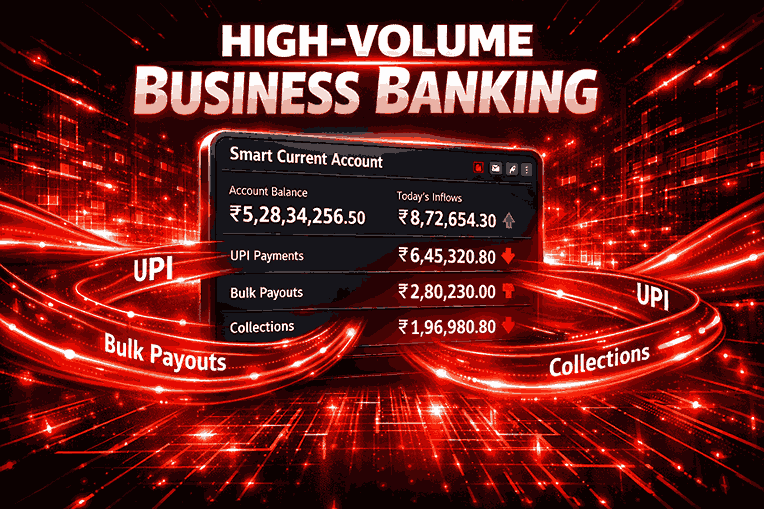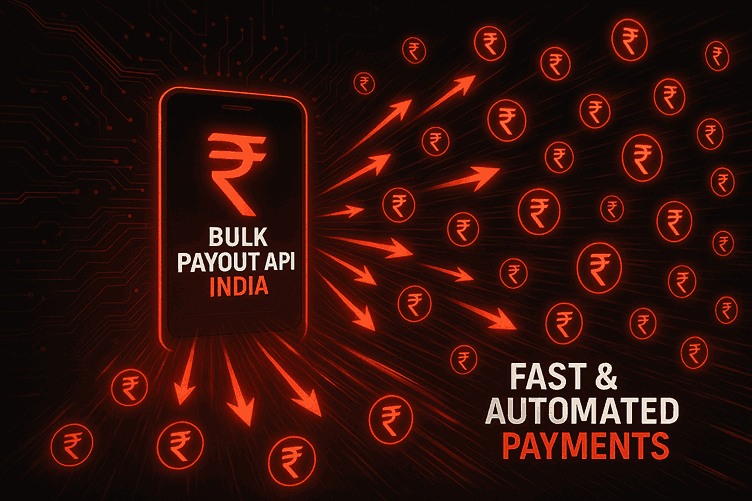The Top Benefits of Real-Time Banking for Small Businesses

Small
businesses are the backbone of the economy, and managing finances efficiently
is crucial for their growth and survival. Traditional banking processes—often
involving delays and manual reconciliations—can slow down business operations
and increase risks. This is where real-time banking offers a transformative
advantage. By enabling instant transaction processing and immediate financial
insights, real-time banking empowers small businesses to operate with agility,
accuracy, and confidence. In this blog, we explore the top benefits of
real-time banking for small businesses and how it can drive success in today’s
fast-paced market.
Table of Contents
1.
Immediate
Access to Funds
2.
Enhanced
Cash Flow Visibility and Management
3.
Streamlined
Financial Processes
4.
Quick
and Informed Decision Making
5.
Reduced
Errors and Operational Risks
6.
Improved
Supplier and Customer Relationships
7.
24/7
Accessibility and Operational Flexibility
8.
Stronger
Security Measures
9.
Enables
Scalability and Future-Proofing
10. Competitive Advantage Through
Technology Adoption
Immediate Access to Funds
One of the
most significant benefits real-time banking provides to small businesses is
immediate access to funds. Payments from customers, partners, or platforms are
reflected instantly in the business account. This speed eliminates the
uncertainty and waiting periods seen with traditional batch settlements or
cheque clearance. Quick access to money means businesses can pay suppliers
promptly, invest in new opportunities faster, and avoid cash crunches that
could stall operations or growth.
Enhanced Cash Flow Visibility and Management
Real-time
banking offers small businesses a constantly updated view of their financial
status. Seeing inbound and outbound transactions as they occur enables
entrepreneurs to manage cash flows proactively. This transparency helps
anticipate cash shortages, reduces overdraft costs, and improves budgeting
accuracy. Automated alerts and dashboard summaries allow businesses to spot
trends, track receivables, and plan expenditures with confidence, reducing
surprises that could impact stability.
Streamlined Financial Processes
With
real-time banking, businesses can automate many time-consuming manual tasks
like payment reconciliations, invoicing, and payroll processing. This
automation reduces administrative burden and speeds up financial workflows.
Integration with accounting software further simplifies bookkeeping and tax
reporting. As errors decline, businesses spend less time correcting mistakes
and more time focusing on strategic activities that add value.
Quick and Informed Decision Making
In a
business environment where timing often determines success, real-time banking
equips owners with the financial data necessary to make timely decisions.
Whether it’s extending credit, approving purchases, or taking advantage of
supplier discounts, immediate access to accurate information removes guesswork.
This agility can result in cost savings, better negotiation power, and quicker
responsiveness to market changes.
Reduced Errors and Operational Risks
When money
moves instantly and visibility improves, the chances of fatal accounting errors
and payment duplications fall drastically. Real-time bank feeds and transaction
matching technologies help ensure every payment and receipt is accurately
recorded. This accuracy not only builds trust with customers and vendors but
also helps businesses avoid costly financial discrepancies that could affect
cash flow or compliance.
Improved Supplier and Customer Relationships
Timely
payments supported by real-time banking create goodwill with suppliers who may
offer favorable credit terms or discounts. Similarly, customers enjoy seamless
transaction experiences that boost satisfaction and loyalty. The ability to
send immediate payment confirmations also enhances communication transparency,
encouraging stronger, more reliable business relationships.
24/7 Accessibility and Operational Flexibility
Unlike
traditional banking runs limited by business hours, real-time banking platforms
operate non-stop, including holidays and weekends. This flexibility allows
small businesses to transact anytime and anywhere via online or mobile apps.
The freedom to process urgent payments or check account status outside
conventional hours helps maintain operational continuity and serves customers
whatever time zone or schedule they follow.
Stronger Security Measures
Real-time
banking services embed advanced security through encryption, multi-factor
authentication, and fraud detection algorithms. These layers greatly reduce
risks of hacking, phishing, or identity theft. By protecting both transaction
data and user credentials, businesses minimize exposure to cyber threats,
helping maintain regulatory compliance and preserving customer confidence.
Enables Scalability and Future-Proofing
Adopting
real-time banking platforms positions small businesses for future growth with
scalable payment infrastructure and easy integration with evolving fintech
solutions. Features such as API connectivity, automated repayments, and
AI-driven analytics prepare businesses to expand operations, add new products,
or enter new markets without being held back by legacy banking limitations.
Competitive Advantage Through Technology Adoption
Small
businesses that leverage real-time banking gain a competitive edge by operating
more efficiently and responsively than their peers who rely on slower
traditional methods. Instant financial insights, rapid payments, and automation
improve service delivery and decision-making quality. This technological
sophistication can attract better clients, investors, and partners looking for
reliable, modern collaborators.
Conclusion
Real-time
banking transforms the way small businesses handle finances by delivering
speed, transparency, and control. From immediate funds access to enhanced cash
flow management and security, the advantages empower entrepreneurs to focus on
growth and innovation instead of operational hassles. Embracing these digital
banking solutions is no longer optional but essential for small businesses
aiming to succeed in the dynamic digital economy of 2025 and beyond.
Frequently Asked Questions (FAQs)
What exactly is real-time banking?
Real-time
banking refers to a system where financial transactions—such as fund transfers,
payments, and account updates—are processed instantly. It eliminates delays in
posting or reconciling payments, ensuring immediate availability of funds and
updated financial records.
How does real-time banking improve cash flow for small businesses?
Real-time
banking gives business owners instant visibility into their financial inflows
and outflows. This helps them manage working capital more efficiently, plan
expenses accurately, and avoid shortfalls caused by pending settlements or
delayed payments.
Is real-time banking secure for small businesses?
Yes.
Real-time banking platforms use advanced security protocols such as encryption,
multi-factor authentication, and fraud detection algorithms. These
safeguard sensitive financial data and reduce the risks of unauthorized access
or cyberattacks.
What are some examples of real-time banking in action?
Examples
include instant fund transfers via UPI or IMPS, real-time payment
notifications, auto-reconciliation in accounting systems, and instant
payroll processing for employees. Many digital-first banks and fintech
platforms now offer these capabilities.
Can small businesses integrate real-time banking with existing financial tools?
Absolutely.
Most real-time banking platforms support API integrations with
accounting software, ERP systems, and e-commerce dashboards. This enables
automated updates, real-time expense tracking, and simplified financial
management across systems.
Why should small businesses adopt real-time banking now?
As digital transformation accelerates, adopting real-time banking helps small businesses stay competitive. It improves financial efficiency, decision-making speed, customer satisfaction, and scalability—all of which are critical for thriving in 2025’s dynamic market environment.




















